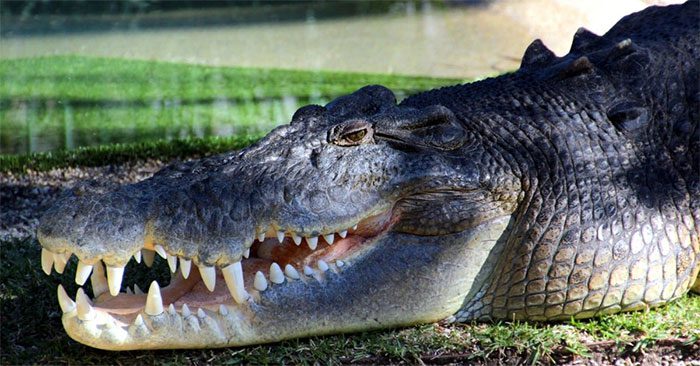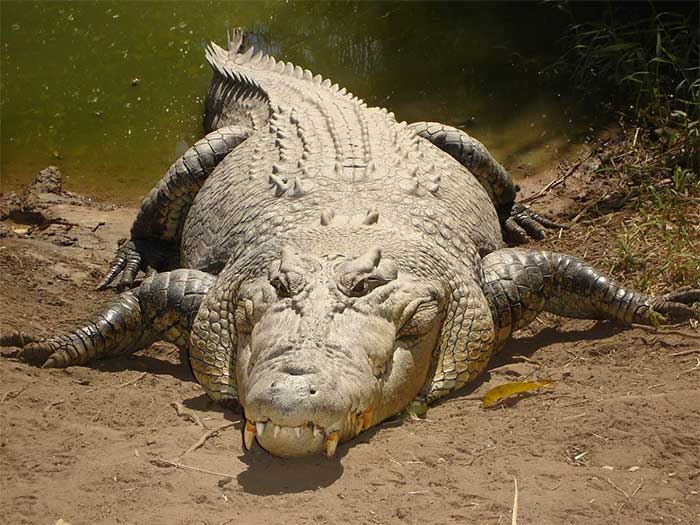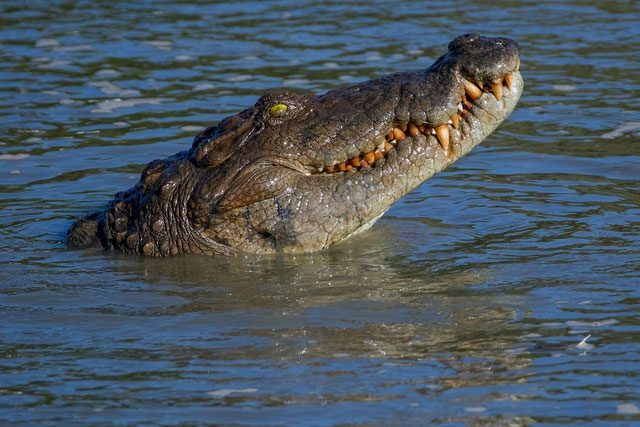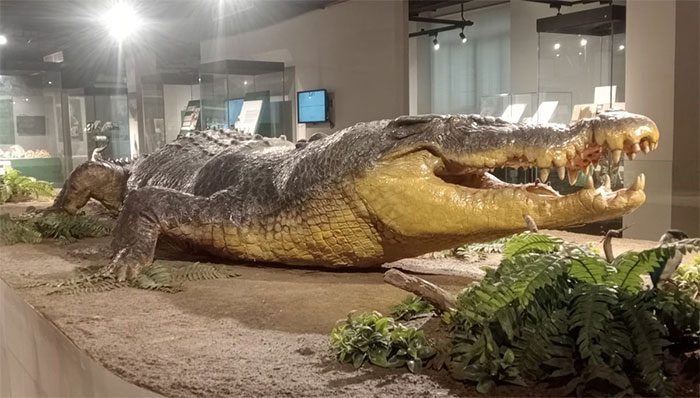Aussies affectionately refer to them as “salties.” However, “Toothy” might be a more fitting term to describe these creatures, as they possess the strongest bite force in the world.

A saltwater crocodile named Elvis at Reptile Park, Gosford. Those teeth produce the strongest bite force in the world. (Photo: John Englart)
Many people may already know that the Kangal is a famous dog breed from Turkey, known for its large size and strength. Male Kangal dogs weigh between 50 to 66 kg and stand 77–86 cm tall, while females are about 72–77 cm tall and weigh between 41–54 kg. They are the strongest biting dogs on the planet, with a bite force of up to 743 psi.
However, the saltwater crocodile (Crocodylus porosus) truly dominates when it comes to absolute jaw strength. Often referred to as a “living dinosaur,” these apex predators have a bite force capable of breaking bones and easily crushing their prey.
It’s no surprise that the saltwater crocodile is the largest crocodile species still existing on Earth. On average, male saltwater crocodiles reach lengths of 17 feet (5.2m) and weigh around 1,000 pounds (450kg). However, biologists have discovered specimens measuring up to 23 feet (7m) and weighing 2,200 pounds (1000kg).
Their bite is indeed proportional to their massive size. In a 2012 study published in the journal PLOS One, researchers investigated the bite force of a captive saltwater crocodile. Using specially designed equipment, they measured the force exerted by a specific individual, recording an astonishing figure of 16,414 Newtons, equivalent to an incredible 3,689 pounds per square inch (psi). This remarkable figure surpasses the bite of any other living creature. For comparison, hyenas, lions, and tigers generate around 1,000 psi (4,450 Newtons), while the average human bite force is 162 psi.

Saltwater crocodiles are the largest crocodile species still existing on our planet. (Photo: Vanrenterghem).
It is worth noting that some sources, including Wikipedia, have considered the Nile crocodile to have the strongest bite force. Brady Barr, an explorer and herpetologist with National Geographic, conducted an experiment measuring the bite force of a wild Nile crocodile by wearing a special suit for protection while approaching the animal.
The suit incorporated a mechanism to measure the force exerted by the crocodile when it attempted to bite the suit. Barr reported a measured bite force of 22 kN (approximately 5,000 psi). However, this experiment has not been published in a peer-reviewed scientific journal, so according to scientifically validated research, the saltwater crocodile is indeed the species that holds the title for the strongest bite force.

The modern saltwater crocodile is the only crocodile species in the order Crocodylia without large scales behind its neck, thus also referred to as “naked-neck crocodile.” Their skin is gray or brown with a rough texture, adorned with black or yellow spots. Saltwater crocodiles have strong limbs and sharp teeth, allowing them to easily bite and capture prey.
Found in saltwater habitats, wetlands, and rivers stretching from the eastern coast of India, across Southeast Asia, and down to the northern coast of Australia, saltwater crocodiles possess a uniquely structured skull specially adapted to produce immense bite force. Their massive jaw structure, combined with a powerful closing mechanism, allows them to grip prey with unparalleled strength. Additionally, their sharp conical teeth are perfectly designed for puncturing and tearing flesh, making them effective hunters in aquatic environments.
However, those teeth are not designed for chewing, so saltwater crocodiles often swallow their prey whole. Their diet includes various organisms such as fish, invertebrates, birds, reptiles, and mammals. Moreover, there have been recorded instances of attacks on humans in India and Indonesia.

Saltwater crocodile “Lolong” – the largest crocodile ever captured in the wild, measuring 6.17 m (over 20 ft) in total length and weighing 1,075 kg (2370 lb). (Photo: Lara Mesoga).
While the 2012 study provides a specific measurement, the true strength of a saltwater crocodile’s bite surpasses those raw figures. The evolution of such a powerful bite serves the saltwater crocodile well in its role as an apex predator, allowing it to subdue and overpower even the most formidable prey, ensuring its survival and dominance within the ecosystem. These giants, surviving from prehistoric times to modern days, have been known to prey on large animals such as buffalo and even sharks – saltwater crocodiles are also renowned as exceptional swimmers and are often found far offshore.
Despite their impressive strength, saltwater crocodiles still face significant threats from habitat loss and hunting. These magnificent creatures are listed as “vulnerable” on the IUCN Red List, highlighting the necessity for conservation efforts to ensure their continued existence.




















































